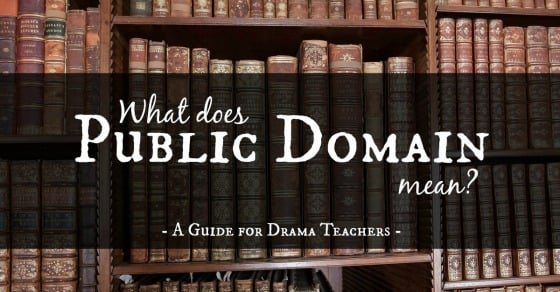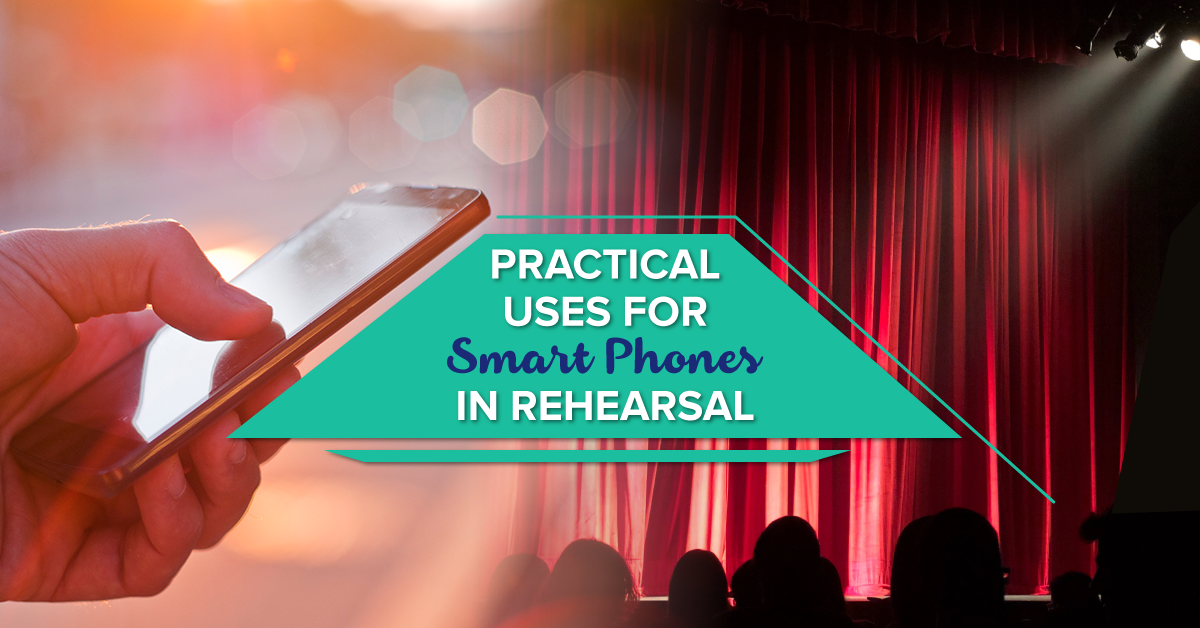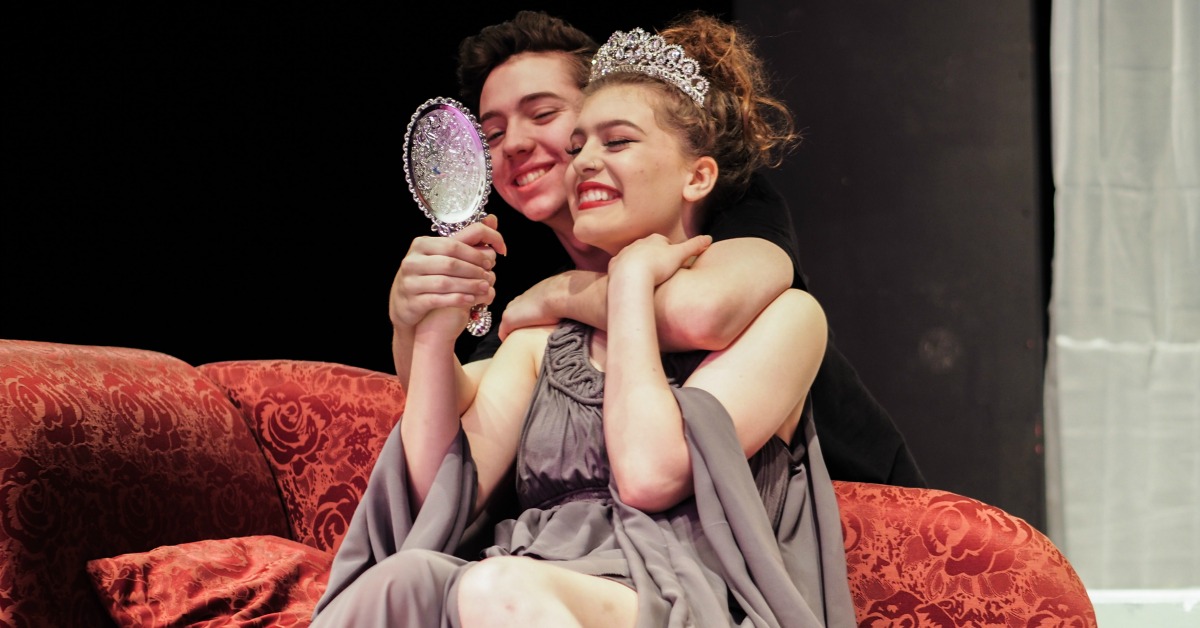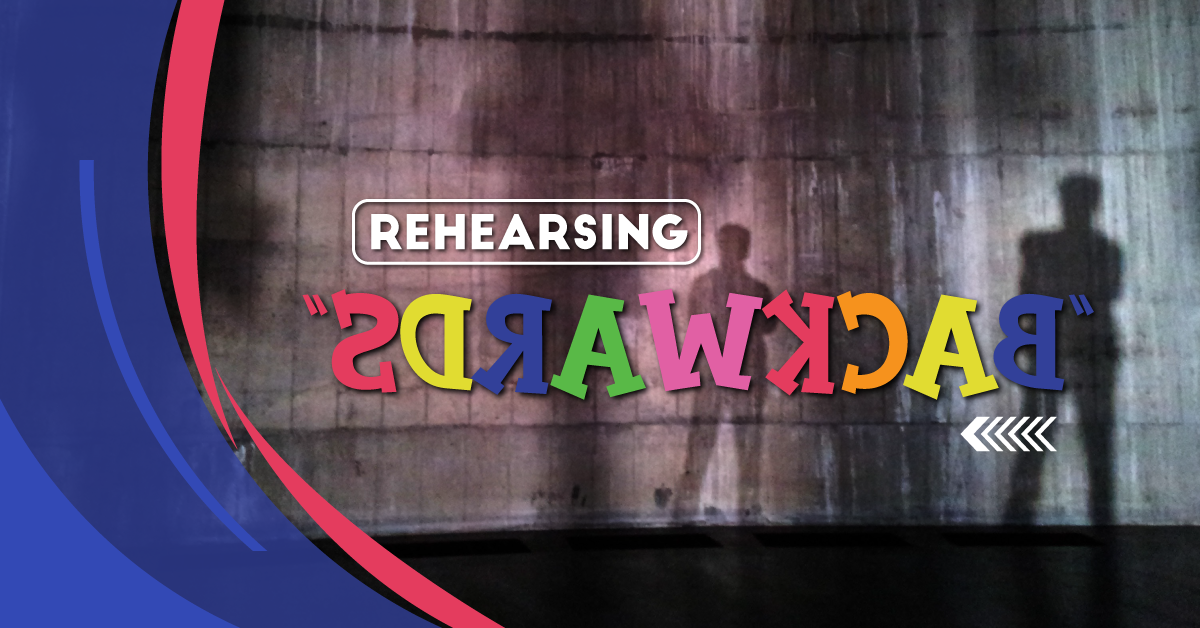What does Public Domain Mean? A Guide for Drama Teachers
I instruct a course on Copyright for the Drama Teacher Academy and I wanted to share what I’ve learned about Public Domain material – particularly how it applies to Drama Teachers.
Before I get started, I want to be clear that I’m not a lawyer and so please don’t take anything here as legal advice. This is a summary of what I’ve learned in my years as a publisher.
Let’s answer the question in the headline first: What does “Public Domain” mean?
A work that is “in the Public Domain” is a work that is completely free for anyone to use in any way they like. It has entered the Public Domain either because the term of the copyright expired or the work was never covered by copyright in the first place.
An example of this would be the works of William Shakespeare. Nobody holds a copyright on his works and so anybody can do whatever they please with them.
Publish them in a book? Sure.
Perform them without royalty? Absolutely.
Translate the text into “modern English?” Yes.
Into Italian? Si.
Write a derivative work such as Postcards from Shakespeare? I hope so, otherwise our lawyers are going to be busy.
Cut them down to an hour? You bet.
Shakespeare works are in the domain of the public. They are there for all of us to use, share, enjoy, build upon, be inspired by, and perform. Here are some other examples of work in the Public Domain.
- Greek Drama (there are Public Domain translations available on Project Gutenberg)
- Grimms’ Fairy Tales (there are Public Domain translations available on Project Gutenberg)
- The works of Charles Dickens (one of the reasons that there are so many versions of A Christmas Carol available)
- Gilbert and Sullivan
How do you know that a work is in the Public Domain?
This depends on an awful lot of things. The first question is: Where you are going to be using it? It doesn’t necessarily matter where the work originated, it matters where you’re using it. Copyright law is applied in the country of use.
Modern copyright law is based on the date of the author’s death. In Canada, the work is under copyright for 50 years after the author dies. In the US, it’s 70 years after the author dies. Therefore, the works of George Bernard Shaw (who died in 1950) is in the Public Domain in Canada but is still under copyright in the US.
Copyright law has changed many times and it can be tricky to navigate all the ins and outs of the various changes. Sometimes it matters when a book was first printed, sometimes it matters if it had a copyright notice, sometimes it matters if the copyright was renewed.
There are some wonderful flowcharts that help with this. Remember that copyright law applies in the country in which the work is being used, not in the country in which the work originated. Make sure you’re using the proper flowchart for your country:
- American flowchart
http://copyright.cornell.edu/resources/publicdomain.cfm - Canadian Flowchart
http://kaplanmyrth.wordpress.com/2008/12/16/updates-to-the-canadian-copyri/
Thankfully, copyright is simpler today. It’s automatic. It exists the second the author writes the words. It doesn’t require registration, it doesn’t require the © mark, it doesn’t require much of anything except a creative being “fixed” in a tangible way.
The big caveat!
Only the original work is in the Public Domain. Any creation based upon or inspired by or translated from the original work is most likely under a form of copyright protection.
Postcards from Shakespeare is a fine example of this. It’s based many of Shakespeare’s plays, all of which are in the Public Domain. But the new work is protected by copyright.
Project Gutenberg is a wonderful source of Public Domain translations of classic works like Molière and The Greeks. But John Barton’s The Greeks is protected by copyright.
Public Domain is NOT
You know what Public Domain is, here are some things that it is not.
Works posted online. The fact that a work is posted online (even by the author herself) does not place it into the Public Domain. There are hundreds of copies of Star Wars posted on the Internet. It isn’t Public Domain. It’s just heavily pirated.
Anonymous works. Just because the author has used a pseudonym or is anonymous doesn’t mean that it’s free to use. It’s still protected by copyright. The term of the copyright is different for anonymous works but it’s still protected for many years.
Work for which you can’t find the author or the rightsholder. Also known as orphan works. These are still protected by copyright for the same duration as mentioned above.
Work released under a Creative Commons license. Creative Commons is a fabulous evolution to the world of copyright and intellectual property. It’s a very forward-thinking and open look at copyright. For that reason, many people confuse CC-licensed work as totally free to use. But CC in and of itself isn’t a license to have free reign with the work. Each work is licensed with certain terms and restrictions. A discussion of the various CC licensing schemes is well beyond the scope of this article, but suffice to say that CC licensed work is still covered by copyright.
Want more?
Interested in learning more? Consider joining the Drama Teacher Academy – professional development on demand for drama teachers.



